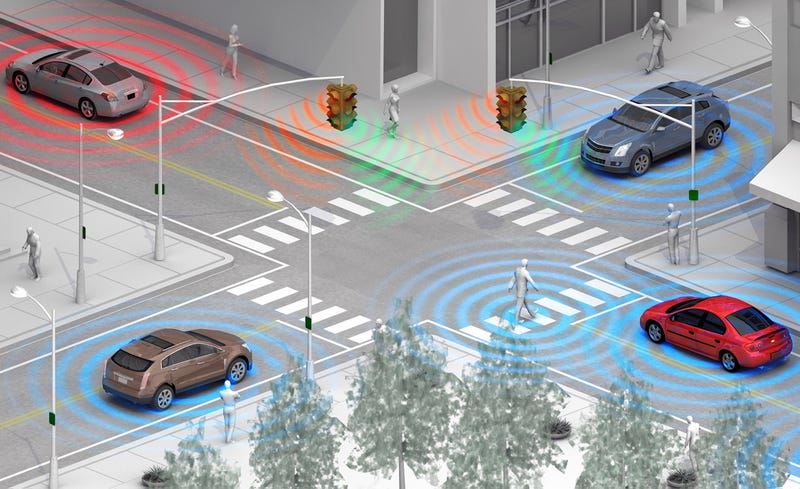Toyota Bets Big on Connected-Car Tech
With or without industry competitors and government regulators, Toyotasays it will forge ahead and start rolling out a long-known safety technology in new vehicles it sells in the United States, even if it’s not fully useful until everyone s.
A vehicle cannot receive a warning message from a car entering an upcoming intersection. If the other car is not equipped with the same system. A split in market approaches throughout the industry would likely render both systems less effective.
In the waning days of the Obama administration, the federal government proposed rules that would mandate the DSRC approach, aiming to achieve the critical mass of users necessary to make this all worthwhile. But to date, the current Department of Transportation administration has not acted upon that proposal. It remains in limbo.
Cars Could Converse Soon
Which is why Toyota’s decision to move forward carries both weight and risk. Proponents of the DSRC approach to these communications, which comprise vehicle-to-vehicle (V2V), vehicle-to-infrastructure (V2I). Also vehicle-to-pedestrian (V2P) designations and are often wrapped together under the banner of vehicle-to-everything (V2X). Argue that manufacturers can start saving lives sooner than if they wait for a consensus to materialize.
Self-Driving Cars
Eventually, information from V2X systems can be fed to automated driving systems for use by their decision-making algorithms. One advantage V2X systems have is that, unlike the other sensors aboard automated vehicles, they can provide information on imminent hazards not based on line of sight.
This is the second time in recent years that Toyota has positioned itself as a front-runner in adding new safety technology while its competitors lagged. When a group of 20 automakers reached a voluntary agreement to equip all new vehicles with automated emergency braking by 2022, Toyota took its efforts a step further and pledged to install the systems as standard equipment in all new cars by the end of 2017. The company says that 92 percent of its Toyota and Lexus vehicles now sold contain automated emergency braking systems.
- Toyota Intends to Deploy Autonomous Rolling Stores by 2020
- Toyota Uneasy about the Handoff between Automated Systems and Drivers
- Feds Make Connected-Car Projects a Priority with Major Grants
At the time of that announcement, the future of automated emergency braking seemed nothing but promising. In the case of DSRC, which has been developed over the past 13 years with a group of global automakers, infrastructure organizations, and the DOT, its future is nonetheless very much uncertain. But Toyota’s announcement gives it a sudden shot of renewed momentum.

